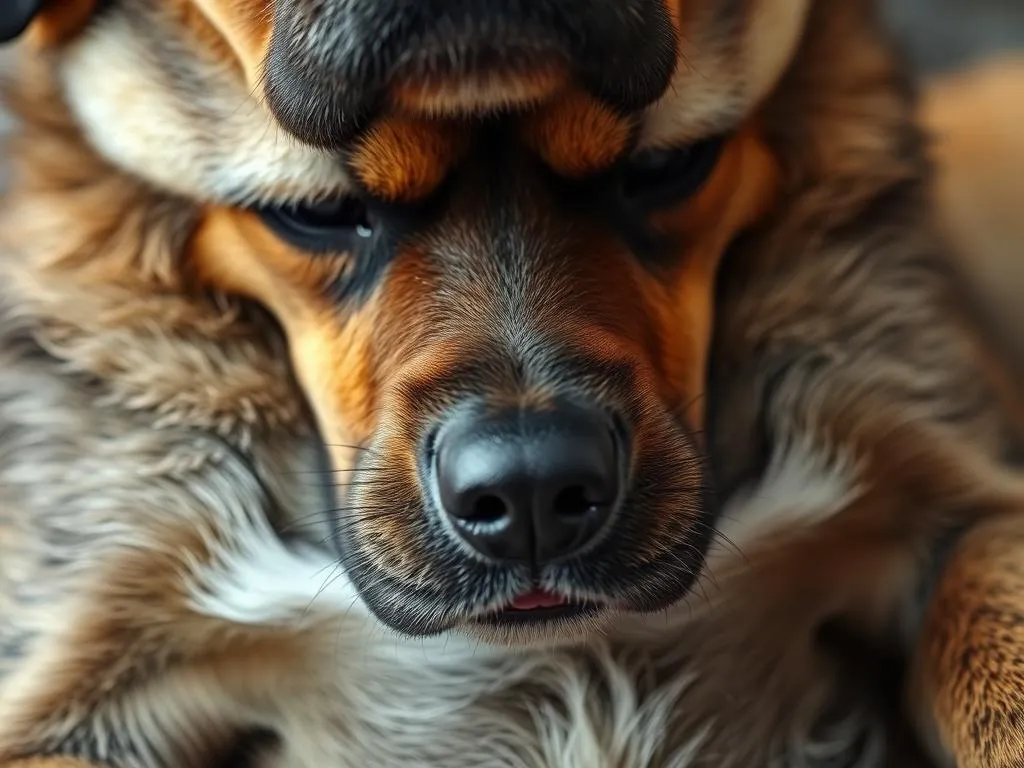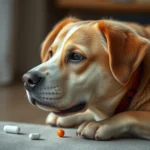
Understanding the health of our furry friends is a vital part of every dog owner’s responsibility. One common concern among pet parents is the discovery of a lump on their dog’s stomach. This can be alarming, leading to questions and anxiety about what it could mean. The key question many ask is, what is the lump on my dog’s stomach? This article provides in-depth information to help you understand the potential causes of lumps and when to seek veterinary advice.
Understanding Dog Anatomy
Basic Anatomy of a Dog
Dogs, like all animals, have a complex body structure. Their anatomy consists of various organs and systems working together to maintain health. The abdominal area is particularly important, as it houses critical organs such as the stomach, intestines, liver, and spleen. Understanding where these organs are located can help you identify any abnormalities, such as lumps or swelling.
Common Types of Lumps on Dogs
Lumps on dogs can vary significantly in type and nature. It’s essential to differentiate between benign and malignant lumps:
- Lipomas: These are benign fatty tumors commonly found under the skin. They are generally soft and movable.
- Cysts: Fluid-filled sacs that can form on the skin or within tissues. Most cysts are harmless.
- Tumors: These can be either benign or malignant. Malignant tumors can be aggressive and require immediate attention.
- Hernias: Occur when organs or tissue protrude through an abnormal opening. They can present as lumps on the stomach.
Understanding these types can help you make informed observations about your dog’s health.
Identifying the Lump on Your Dog’s Stomach
Characteristics of the Lump
When you discover a lump on your dog’s stomach, pay attention to its characteristics:
- Size: Is it small like a pea, or larger than a golf ball?
- Shape: Is it round, oval, or irregular?
- Texture: Is it soft, firm, or hard?
- Mobility: Can it be moved around easily, or is it fixed in place?
- Pain Sensitivity: Does your dog react when you gently press on it?
These factors can provide valuable information about the potential nature of the lump.
Location Matters
The location of the lump on your dog’s stomach is also crucial. Lumps near the rib cage may indicate issues with internal organs, while those near the groin could suggest different concerns. Understanding the area can guide you in discussing the issue with your veterinarian.
Causes of Lumps on a Dog’s Stomach
Benign Causes
Many lumps are benign and pose no threat to your dog’s health. Common benign causes include:
- Lipomas: These fatty tumors are often found in older dogs and are generally harmless.
- Sebaceous cysts: These result from clogged oil glands and are common but usually not serious.
- Abscesses: Often resulting from infections, these can be painful but are treatable.
Malignant Causes
Unfortunately, some lumps can be malignant. These include:
- Malignant tumors: Such as mast cell tumors, which can be aggressive. Early detection is key.
- Lymphoma: A type of cancer that affects lymphoid tissues and can present as lumps.
- Other serious conditions: Including various types of sarcomas.
Understanding the potential for malignancy is critical in seeking prompt veterinary care.
Other Considerations
The formation of lumps can also be influenced by factors such as:
- Age: Older dogs are more prone to developing lumps.
- Breed: Certain breeds may be predisposed to specific types of tumors.
- Health history: A dog’s previous health issues can play a role in lump formation.
- Environmental factors: Exposure to toxins or allergens can also contribute.
When to Seek Veterinary Care
Signs That Require Immediate Attention
Some signs should prompt an immediate visit to the veterinarian:
- Rapid growth of the lump: If the lump grows quickly over a few days.
- Signs of pain or discomfort: If your dog is whining, limping, or showing signs of distress.
- Accompanying symptoms: Such as vomiting, lethargy, or loss of appetite.
These indicators can signify that the lump requires urgent evaluation.
Routine Check-ups
Regular veterinary examinations are essential for maintaining your dog’s health. Incorporate lump checks into routine care, ensuring any changes are noted and discussed during visits.
Diagnostic Procedures
Veterinary Examination
During a veterinary visit, expect a thorough examination. The vet will assess the lump and may ask you questions such as:
- When did you first notice the lump?
- Has it changed in size or shape?
- Is your dog showing any signs of discomfort?
Providing accurate information can assist the veterinarian in diagnosing the issue.
Diagnostic Tests
To determine the nature of the lump, your veterinarian may recommend several diagnostic tests:
- Fine needle aspiration: A quick procedure where a needle is used to extract cells from the lump for analysis.
- Biopsy: A more invasive test where a sample of the lump is removed for detailed examination.
- Imaging techniques: Such as ultrasound or X-rays, to visualize the lump and surrounding structures.
These tests can help differentiate between benign and malignant lumps.
Treatment Options
Non-Surgical Treatments
In cases where the lump is benign, your veterinarian may recommend:
- Monitoring: Keeping an eye on the lump for any changes.
- Medication: For infections or inflammation, which may help reduce swelling.
Surgical Interventions
If the lump is malignant or poses a risk, surgery may be necessary. Your veterinarian will discuss:
- When surgery is necessary: If the lump is suspected to be cancerous or causing other health issues.
- Risks: Every surgery comes with risks, and your vet will explain these.
- Recovery considerations: Post-operative care is crucial for a successful recovery.
Follow-up Care
Follow-up appointments are vital to monitor your dog’s progress after treatment. Look for:
- Signs of infection: Such as redness, swelling, or discharge.
- Changes in behavior: If your dog seems unwell or in pain after surgery.
Monitoring and follow-up care can ensure your dog remains healthy.
Prevention and Health Maintenance
Regular Check-ups and Health Screenings
Creating a regular healthcare schedule for your dog is essential for early detection of health issues. This includes:
- Annual veterinary check-ups: To catch any potential problems early.
- Vaccinations and parasite control: Keeping your dog protected from diseases.
Lifestyle and Diet
A balanced diet and regular exercise are critical in maintaining your dog’s health and preventing obesity, which can lead to various health issues, including lumps. Consider:
- Nutritional needs: Providing a well-rounded diet tailored to your dog’s age, size, and activity level.
- Exercise routines: Regular walks and playtime can help maintain a healthy weight.
Home Care and Monitoring
Regular self-examinations can help you catch potential issues early. Techniques include:
- Routine checks: Feel your dog’s body regularly to notice any new lumps or changes.
- Keeping a health journal: Document any changes in the lumps, behavior, or health status to share with your veterinarian.
Conclusion
Finding a lump on your dog’s stomach can be concerning, but understanding the various possibilities can help you stay calm. From benign lipomas to malignant tumors, the nature of the lump can vary widely. Regular veterinary visits, combined with attentive home care, can lead to early detection and treatment of potential issues. Always consult with your veterinarian for any health concerns regarding your beloved pet, as they can provide the best guidance tailored to your dog’s specific needs. Proactive health care is crucial for ensuring your dog lives a long and healthy life.









